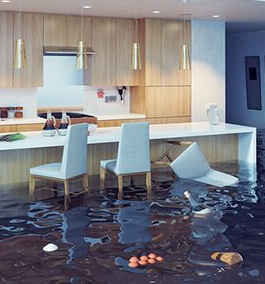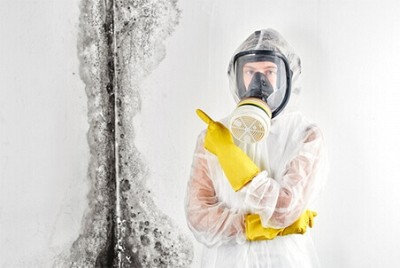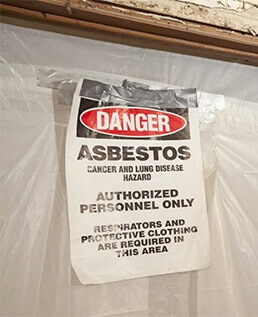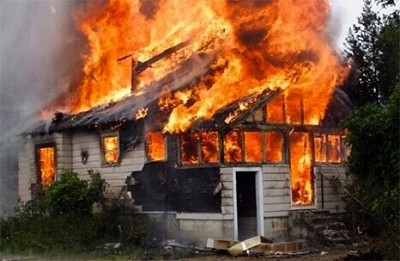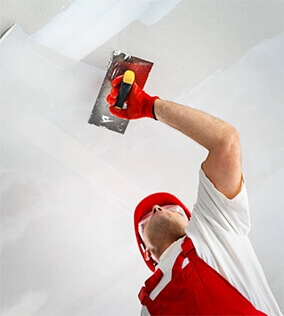The Risks of Ignoring Mold Problems in Your Toronto Property
Posted in Mold Removal, on February 15, 2024
Have you ever seen mold in your house or office? It's more common than you think. When not dealt with, mold infestations can quickly spell trouble for your air quality and building materials. Mold loves to grow in damp or humid places like basements, bathrooms, and kitchens, causing a serious problem for the occupants and structure of your property. To protect yourself from the persistent invader, learn how to spot mold on your property and how to prevent the adverse effects of mold exposure. Trust Canada's Restoration Services, the IICRC professionals for comprehensive mold removal in Toronto.
Why Address Indoor Mold Infestations
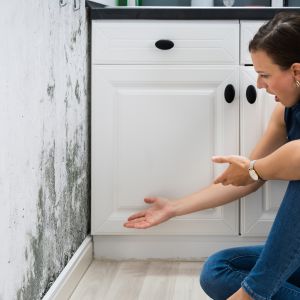 Mold growth can pose serious challenges for one's health, finances, and possibly your legal standing as a landlord. Mold is a type of fungus that thrives in damp settings, causing allergies, asthma, and respiratory issues. Unfortunately, mold infestations are common in households and commercial buildings alike, and identifying and ousting mold can be a challenging task. It is important to comprehend mold's risks and take preemptive steps to avoid black mold growth before mold remediation is required.
Mold growth can pose serious challenges for one's health, finances, and possibly your legal standing as a landlord. Mold is a type of fungus that thrives in damp settings, causing allergies, asthma, and respiratory issues. Unfortunately, mold infestations are common in households and commercial buildings alike, and identifying and ousting mold can be a challenging task. It is important to comprehend mold's risks and take preemptive steps to avoid black mold growth before mold remediation is required.
Health Risks of Mold Exposure
Mold growth is a serious concern and can have detrimental effects on human health, especially for those who are allergic or sensitive to mold. When mold spores are inhaled, they can trigger allergic reactions, asthma attacks, and respiratory problems. Some types of mold can also produce mycotoxins, which are toxic substances that have been linked to severe health problems, including neurological and immunological damage. In addition to respiratory issues, common symptoms of mold exposure include coughing, wheezing, and skin irritation. Some people may also experience more severe symptoms, such as difficulty breathing, chest tightness, and persistent headaches. Long-term mold exposure can also compromise the immune system and lead to more severe health issues, such as chronic bronchitis and fungal infections.
By investing in professional mold removal costs, you can mitigate the long-term or harmful effects on your own health and your loved ones. Expert remediation experts at Canada’s Restoration Services will help you identify, contain, and eliminate infestations before they go too far.
What Mold Does to Building Materials
While the impact of mold and mycotoxins on the health of occupants is arguably the most difficult effect to deal with, mold infestations can also damage important building materials, ultimately affecting your home or commercial property’s structural integrity. When infestations grow, it can cause insulation to be rendered ineffective, decay wood beams and floors, and break down drywall. To keep your property in pristine condition and to protect your investment, trust Canada’s Restoration Services for mold removal in Toronto as well as high-quality reconstruction services.
How to Spot Mold in Your Property
Spotting and identifying mold is the first step towards solving a mold predicament nt. While mold growth can be challenging to identify, as it regularly develops in concealed zones. Look for fuzzy or discolored patches on walls, floors, ceilings, furniture, or other porous surfaces, especially in damp areas like basements or near pipes. Musty scents provide another telling sign. Document any mold discovery thoroughly in case legal action becomes necessary down the line.
These signs include a stuffy odour, water stains, and darkening on walls and rooftops. If you suspect that there is growth in your property, it is critical to have it inspected by an expert mold removal company, such as Canada's Restoration Services. Our trained technicians perform thorough mold inspections that will help detect the type of growth and the degree of the development to create a plan to rid your property of mold.
Consequences of Ignoring Mold Problems
Failing to properly handle mold growth on one's property can have severe repercussions. Mold is capable of multiplying rapidly and inducing further harm to structural integrity. More worryingly, it poses detrimental risks to personal wellness. Furthermore, ignoring mold growth leaves one accountable should mold-related illnesses or damages occur to others. Therefore, timely action is prudent to avoid worsening conditions and their assorted undesirable outcomes.
Preventing Mold Growth in Your Property
Several steps can be taken to proactively prevent mold growth from taking hold. Maintaining adequate airflow and ventilation is key to discouraging moist environments where mold spores can grow. Be vigilant about fixing water leaks promptly and maintaining proper moisture levels.
- Maintaining Proper Moisture Levels: Mold growth flourishes in moist environments, so sustaining humidity levels in your home within suitable limits is crucial. Utilize a dehumidifier in damp zones like basements and bathrooms.
- Stopping Seepage: Moisture intrusion can result in mold growth, so it is essential to stop any seepages right away. Routinely inspect your property for dampness issues and have them resolved promptly.
Regular upkeep and care can help stop mold from spreading. Wipe down and dry spaces that often get wet, like bathrooms and kitchens, and make certain your home gets plenty of fresh air flowing through. Keeping areas clean and dry, along with good airflow, can prevent mold issues before they start.
What to Expect From Professional Mold Removal in Toronto
Mold removal is a crucial process that requires expertise. Hiring a professional mold removal service like Canada's Restoration Services allows our technicians to properly identify the mold strain and scope of growth. Our specialists can then implement effective solutions to eliminate the mold safely and thoroughly. Our experience ensures the job is done right to protect the health of all the occupants of your property.
- Upon arrival, our trained technicians will start with a complete examination of your property. This inspection allows them to pinpoint what variety of mold has taken hold and how far it has spread. Identifying the mold is essential since it shows our team what methods and gear to employ during the removal process. Knowing the type and scope provides us direction for effectively handling the job.
- Once the inspection is complete, the next step is containment. Our mold removal team will take measures to contain the affected area to prevent mold spores from spreading to other parts of your property. They will use specialized materials such as plastic sheets and tape to seal off the area and prevent mold spores from escaping.
- After the area is contained, our mold removal team will begin the removal process. They will use specialized equipment and techniques to remove the mold from your property. The process involves the use of HEPA vacuums, chemicals, air scrubbers, and other tools that are designed to remove mold spores from surfaces and the air.
- The final step in the mold removal process is cleaning and disinfecting. The affected area will be thoroughly cleaned and disinfected to prevent future mold growth. Our team will use specialized cleaning agents that are designed to kill mold spores and prevent them from growing back. Once the cleaning process is complete, the team will conduct a final inspection to ensure that all traces of mold have been removed from your property.
Protect Your Home with Professional Mold Removal Services
Mold growth is a serious problem that can cause health problems, financial loss, and even legal issues. It is important to understand the risks associated with mold growth and the preventative measures that can be taken to avoid mold growth. If you suspect that there is mold growth on your property, it is important to contact Canada's Restoration Services for professional mold removal in Toronto, such as Mold Remediation, to identify and remove the mold safely and efficiently. By taking these steps, you can protect your health and property from the dangers of mold growth.
Are you dealing with mold growth on your property and are concerned about the associated health risks?


